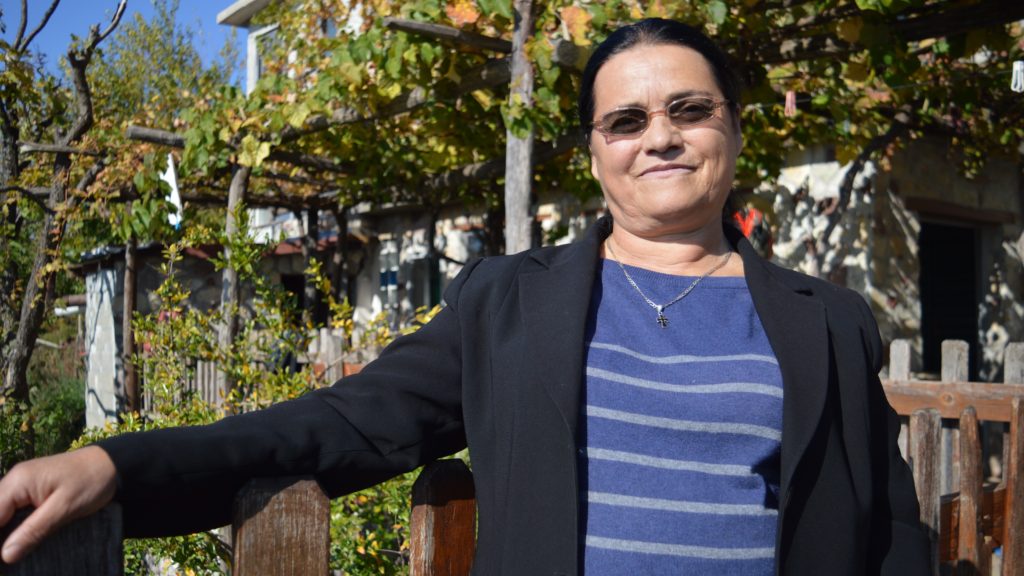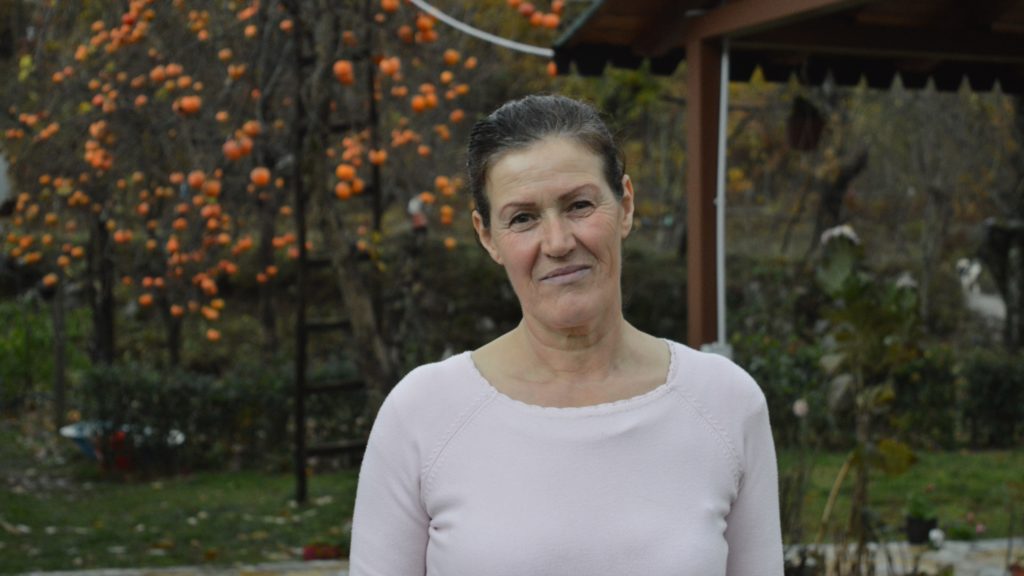Encoding Ideology on Women's Bodies
The xhubleta is not a political garment by design or intended purpose (Skurtaj, 2018). Under the reign of Enver Hoxha, though, Albania was transformed into an atheist state. Under this rule, it was declared that “tradition posed a serious obstacle to the creation of a desired socialist future” (Doja, 2014, p. 164). The xhubleta, adorned with religiously affiliated symbols, became taboo due to the communist revision of culture.
Despite tradition being seen as an obstacle towards a socialist future, Enver Hoxha’s cultural revolution led to tradition being celebrated, but selectively so. To build a nationalist spirit in favor of the party, aspects of culture that aligned with the socialist agenda were promoted, while those that did not were eradicated. The government declared that “social practices and cultural values that were not compatible with communist ideology, … were to be considered ‘inauthentic’, ‘alien’, or ‘disruptive’ to Albanian socialist reality. These practices were to be removed from the realm of people’s culture” (Doja, 2014, p. 165). The use of the xhubleta, especially in the case of ceremonies that had religious ties, like marriage, was discouraged.
However, folk costume was not banned entirely, as shown by the annual folk festival in Gjirokastra. At such events, favorable tradition was carefully framed to not include any “‘backward’ practices that were prevalent in the areas which had produced them” (Doja, 2014, p. 166). These events were key in spreading Hoxha’s ideal socialist vision for Albania.
Tonine Boloj was one of the many women who were denied the opportunity to wear a xhubleta to their weddings under the communist regime.
“We did not think we should wear the xhubleta anymore, and we wore new outfits. I did not wear the xhubleta on the wedding day either.”
– Tonine, 2018
“Even I did not marry wearing a xhubleta because when I was married it was forbidden in the communist times and banned as a tradition, but I would have liked to have worn it on the wedding day.”
– Tonine, 2018
Though the xhubleta was discouraged from being worn, the dresses were not destroyed or confiscated. They remained stowed away in families’ homes, silently kept in arcs to be passed down among the women of the family (R. Shkurtaj, personal communication, Nov. 12, 2018).
“During the Communist era, did you wear a xhubleta or did they take it?”
“No, no one took it from us, my mom had kept it. You were not forced by anyone to not have a xhubleta at home.”
– Tonine, 2018
Not all women were unable to wear the xhubleta for their wedding. Zinë Markaj’s husband’s family status under the regime afforded her the opportunity to wear her mother’s xhubleta at their wedding. Tradition was important to Zinë’s family. Because being married in a xhubleta was so rare at this time, crowds of people visited Reç on their wedding day to see Zinё (Z. Markaj, personal communication, Nov. 28, 2018).
“I was criticized for her wearing a xhubleta, because it was old tradition. It was against the system. And for my personality, I didn’t mind the critics, I accepted for her to wear the xhubleta. But if I wasn’t the only one in my profession, and didn’t have the education I had, I would be fired. It was discouraged because it was old traditions, it wasn’t very ok for the party back then. I was a teacher, I was educated. The only one in that area, so it was tolerated. If it were someone else they may be fired for that. All of these were remainings of the chinese culture that came in the 67. And after the chinese, everyone went for giving up on traditions and the old cultural consequences.”
– Mirash [Zinё’s husband], 2018
Harsh penalties were not uncommon at the time. After the regime collapsed, women such as Tonine’s sister-in-law were able to be married in a xhubleta without incident (T. Boloj, personal communication, Nov. 6, 2018).
Under communism, with farms collectivized and new work quotas introduced, it was difficult for women to wear the xhubleta in day to day life, further restricting the dress to festivals. The time devoted to work in collective farms also affected the construction of xhubleta, as there was less time for girls to spend working on their dress and shops were no longer able to supply all of the materials needed (Hamza, 2018). The regime proposed a new style of clothing for female workers. This new dress was much lighter, modeled after Maoist worker clothing (Hamza, 2018), and provided the women more maneuverability and comfort during labor. Tonine explained that the xhubleta “is [a] really heavy garment. It was worn in the past because at that time people did not have options for what to wear, and they had lived with old clothes with handmade clothing from wool” (T. Boloj, personal communication, Nov. 6, 2018).
Women who never wore the xhubleta, such as File, shared that she would not have liked to wear the xhubleta in her day to day life. The dress presented a tremendous physical burden to the wearer; the skirt alone weighed around fifteen kilograms (Dukgilaj, 2018).
“There [is] no time for that now. I didn’t want to. They’re very beautiful, but heavy.”
– File, 2018
Another woman called the xhubleta “the heaviest dress, the worst condemnation” (D. Vaçoj, personal communication, Nov. 28, 2018). Some women felt liberated by the removal of the costume from day to day life, while others felt something was missing without it.
“It was enough to wear xhubleta to show that you were a girl from Malesia e Madhe, women of modernity wear clothes that show nothing [about their heritage].”
– Lule, 2018
Further disruptions occured around the xhubleta with the fall of communism in the early 1990s. The closed borders of the country were opened to the world and some women were able to compare their clothing with the outside world.
“Until when did you wear the xhubleta?”
“I wore the xhubleta daily until about 30 years ago.”
“Why did you stop wearing the xhubleta, why don’t you wear it anymore?”
“I wanted to dress more lightly and comfortably. We had a lot of work to do and it is easier to dress in other clothing.”
“Did you stop wearing it just because it was easier to work without the xhubleta?”
“We also saw that the rest of the world wasn’t wearing them.”
– Age, 2018
Albania was joining the rest of Europe in new social norms. This included dramatic changes in culture which led to equally dramatic changes in dress. Large adaptations like this often bring to light conflicts over past identity and beliefs (Arvanitidou, 2011). The quote below highlights this, also spoken by Age.
“When you didn’t wear the xhubleta anymore and started dressing in modern clothes, how did you feel? Was it better with the xhubleta or without it?”
“We said that with the xhubleta flew away virility (pride) as well. [laughs]. But that was really true.”
– Age, 2018

